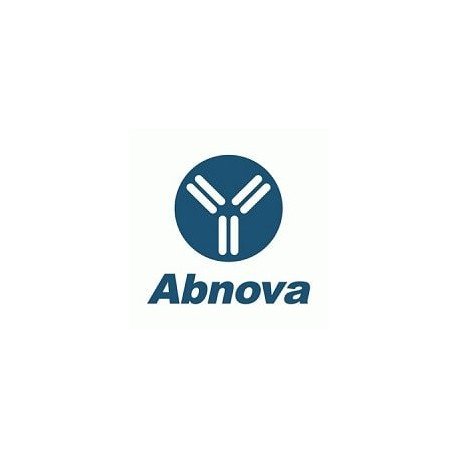Cart 0 Product Products (empty)
No products
To be determined Shipping
0,00 € Total
Prices are tax excluded
Product successfully added to your shopping cart
Quantity
Total
There are 0 items in your cart. There is 1 item in your cart.
Total products (tax excl.)
Total shipping (tax excl.) To be determined
Total (tax excl.)
Data sheet of SERPINI2 polyclonal antibody
| Brand | Abnova |
| Product type | Primary antibodies |
| Reactivity | Human |
| Host species | Goat |
| Applications | ELISA,WB-Ti,IHC-P |
More info about SERPINI2 polyclonal antibody
| Brand: | Abnova |
| Reference: | PAB6764 |
| Product name: | SERPINI2 polyclonal antibody |
| Product description: | Goat polyclonal antibody raised against synthetic peptide of SERPINI2. |
| Gene id: | 5276 |
| Gene name: | SERPINI2 |
| Gene alias: | MEPI|PANCPIN|PI14|TSA2004 |
| Gene description: | serpin peptidase inhibitor, clade I (pancpin), member 2 |
| Immunogen: | A synthetic peptide corresponding to internal region of human SERPINI2. |
| Immunogen sequence/protein sequence: | C-KGDWKQKFRKEDTQ |
| Protein accession: | NP_006208.1;NP_00101230.3.1 |
| Form: | Liquid |
| Concentration: | 0.5 mg/mL |
| Recommend dilutions: | ELISA (1:64000) Western Blot (0.3-1 ug/mL) Immunohistochemistry (Formalin/PFA-fixed paraffin-embedded sections) (3 ug/mL) The optimal working dilution should be determined by the end user. |
| Storage buffer: | In Tris saline, pH 7.3 (0.5% BSA, 0.02% sodium azide) |
| Storage instruction: | Store at -20°C. Aliquot to avoid repeated freezing and thawing. |
| Note: | This product contains sodium azide: a POISONOUS AND HAZARDOUS SUBSTANCE which should be handled by trained staff only. |
| Product type: | Primary antibodies |
| Host species: | Goat |
| Antigen species / target species: | Human |
| Specificity: | This antibody is expected to recognize both reported isoforms (NP_006208.1, NP_00101230.3.1). |
| Reactivity: | Human |
| Application image: |  |
| Application image note: | SERPINI2 polyclonal antibody (Cat # PAB6764) (3 ug/mL) staining of paraffin embedded human pancreas. Microwaved antigen retrieval with citrate buffer pH 6, HRP-staining |
| Applications: | ELISA,WB-Ti,IHC-P |
| Shipping condition: | Dry Ice |
| Publications: | Isolation and characterization of a novel human pancreas-specific gene, pancpin, that is down-regulated in pancreatic cancer cells.Ozaki K, Nagata M, Suzuki M, Fujiwara T, Miyoshi Y, Ishikawa O, Ohigashi H, Imaoka S, Takahashi E, Nakamura Y. Genes Chromosomes Cancer. 1998 Jul;22(3):179-85. |


